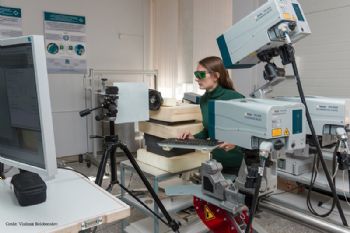
The use of composite and multi-component materials is widespread in the aviation and automotive industries, because they have characteristics that compete with metals while weighing much less.
However, due to their multi-component composition, it can be difficult to test the quality of such materials, which may contain very small hidden defects — including delamination, cracks and impact damage — that could have disastrous effects in aerospace applications.
Daria Derusova at the TPU Research School of High Energy Physics (in Tomsk, Russia) (
www.tpu.ru/en) is developing a system that combines three methods of non-destructive testing — vibration, resonant ultrasonic and thermal — that will make it possible to monitor the quality of large and complex products made of composite materials.
The Russian Science Foundation has supported this two-year project up to 2020.
Ms Derusova said: “New composite materials appear every year, and they challenge existing methods of non-destructive testing.
“Joints between the materials are of particular complexity and importance; while classic ultrasonic and X-ray testing are used, the latter — despite being the most accurate — cannot accommodate large objects, and ultrasonic systems consume large amounts of electricity.
“We expect to build a laboratory facility for testing large and complex objects, using equipment that includes piezo-electric transducers for resonant ultrasonic stimulation, a scanning laser Doppler vibrometer, an infra-red camera and specialised software.
With the system, material is exposed to acoustic stimulation in a wide range of frequencies. The frequency of defect vibrations differs from that of the object and can be detected with a scanning vibrometer.
“In addition, the intense resonant vibrations will locally heat defect areas, and we can detect these with an infra-red camera.
“This data, in conjunction with specialised software, will allow us to identify a defect, along with its location, form and size.”
Within this project, TPU scientists are co-operating with peers from the Institute of Strength Physics and Materials Science, the University of L’Aquila (Italy) and the Symbiosis Institute of Technology (India).
The SА Chaplygin Siberian Research Institute of Aviation is providing material samples for testing the proposed technology.